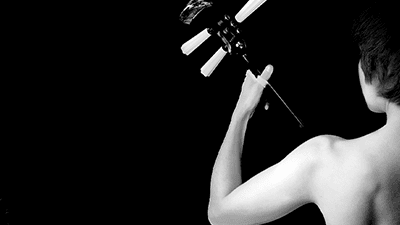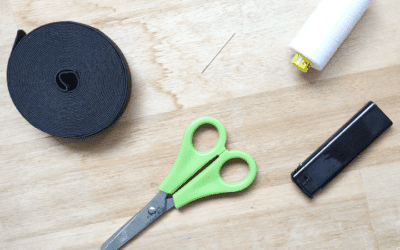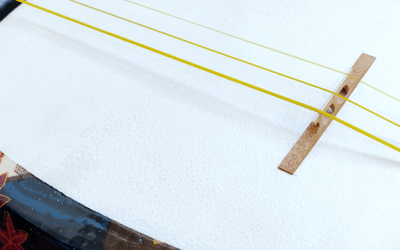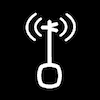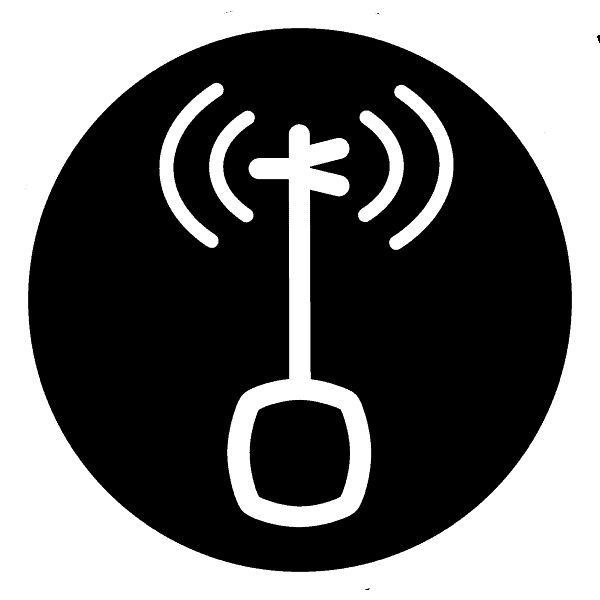What We Are Dealing With
Hazunde is - explained in more detail below - a specific rhythm pattern that underlies lots of Japanese folk songs as their basic groove. If you know songs like Ajigasawa Jinku, Tsugaru Jinku, or Kuroishi Yosare, you might have noticed that they share an especially elated, playful vibe. The biggest challenge hazunde rhythm poses is the fact that it's usually not visible for the eyes in the notation. You have to convert the notation in your head into the hazunde rhythm pattern. So how can you tell wether a piece is supposed to be read and played in hazunde rhythm? There's usually a little remark in the notation. But not always (unfortunately). Also, the little remark is, in Japanese notation, written in Japanese. So it's not easy to read for everyone. Sounds horrible? Don't worry. With a neat little system in place, you will be able to master it.
Notation as Memory Aid
The average person assumes that sheet music contains all the important information you need to play a musical piece. That's true in principle, but shamisen notation in particular are known for not necessarily being strictly precise. A special case is the hazunde rhythm.
Example: Tsugaru Jinku
This is the beginning of the classic Tsugaru Jinku.
If you just go ahead and read and play the song straight away without ever having heard anything about hazunde, and you don't know what the song is supposed to know beforehand, you are going to play the first three measures in the following rhythm:


Tsugaru Jinku Without Hazunde
Audio PlayerBecause all the notes have one underlining stroke, they all have the same time value and are played equally long.
If you know the song, you are aware that the melody is not simply played straight forward. You might get confused by the notation recalling that characteristic.
The rhythm actually sounds like so:

Tsugaru Jinku in Hazunde
Audio PlayerIdentifying Hazunde
We already know that you can't tell by the melody's notation whether a song is to be played in hazunde rhythm.
What makes the difference is the little remark [ はずんで ] that can show up above the first line of notation. I marked it blue in the image below. If you can read hiragana, you can see that it spells "ha-zu-n-de".
This remark tells the reader that the rhythm looks straight but is not played straight. You have to first notice that remark. But if you know that it could be there, in that spot, you can pay extra attention and look for it.

If you can't read hiragana, you could try to somehow memorize what it looks like or write it on a little sticky note you put close to where your practice stuff is. This will make it easy to scan the top part of new sheet music and look for that sign. Here's a couple of real-life examples in different fonts to give you a wider overview over what it can look like.
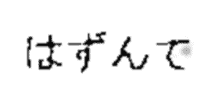
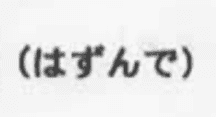


Why and How this Notation Makes Sense
As I mentioned earlier, there's often typos, mistakes, or inaccuracies in shamisen notations. Considering that writing down music is a rather new invention and music is still passed on orally in large parts, it can be enough to have the notation just give you a rough estimate of the song. It is a lot easier and faster to just write the melody notes with a straight rhythm and adding the groove "between the lines" while you read.
Reading Hazunde Rhythm
In the rhythm notation farther up I already showed how hazunde rhythm is read: When you have four same-looking notes in one measure, instead of playing same - same - same - same you alternate between short and long. kurz und langThe first pulse is long, the next is short, followed by another long and another short. Watch out: That's the case for a measure with four equally notated notes. The notes are not arbitrarily long and short, but the long pulse is double the length of the short one.
This rhythm sounds happy, elated, driving. I call it "heartbeat-rhythm". That's easy to remember and everyone knows what a heartbeat sounds and feels like and can imitate it straight away. A different image that can help getting into the groove is imagining a person limping. The normal, straight rhythm on the other hand matches the image of a person just walking straight forward. If you have dealt with rhythm theory before, you might have come across the term "shuffle" for this rhythm pattern.
Conversion of an Easy Example
The more complex a melody's rhythm gets, the more tricky it gets to transfer it to hazunde rhythm - at least in the beginning. But let's stick to a harmless example for now and have a second look at the beginning of "Tsugaru Jinku". In the first measure, all notes are the same length in the notation. The piece starts with a rest - also the same length as the notes. The first note you play appears on the second beat, which makes that note short. This short first note provides some extra momentum.
This is the usual sheet music variant:

This is the "correct" notation showing clearly what we expect to hear when we play.
Applying Hazunde With Ease
Although you could make an effort and transcribe the whole piece and convert it into a version that's easier for the eyes to read at first sight, it is worth trying to nail it with hearing, groove and gut feeling. Here's my top three hacks:
Listen
The by far best advice - not just for pieces in hazunde rhythm - is to know what the song is supposed to sound like. To know, more or less precisely, what the song sounds like that you want to play on your instrument, is beneficial for various aspects of playing. I urge you to listen to the song you want to play as much as you can. I can't recommend it enough - it is so incredibly useful and will make your life a lot easier. If you know what the song sounds like, you can really just use the notation as a memory aid and don't have to use all your brain power to go through the piece number by number, line by line.
Listening to the song before you start playing it is also really helpful because sometimes the notation has no remark whatsoever that it's supposed to be read in hazunde rhythm. Reasons for that may be that it has simply been forgotten by whomever made the notation, or it was assumed the reader knows what the song sounds like. Or maybe it was unimaginable that someone would try to learn the song on their own without a teacher.
Morse Code
If you tend to have your eyes glued to the notation while playing, I got a very easy and neat trick for you: Add morse code symbols above the notes. Dot for short, dash for long. This makes the rhythm obvious at first glance and your brain doesn't have to allocate precious resources on figuring out what's long and short.
Adding dashes and dots is equivalent to writing "actual" rhythm notation.

Find the Groove
If you want to trust your gut more and don't want to look at the notation the whole time, finding the groove before starting to play helps. Before you begin playing the first notes of the song, spend a couple of breaths playing the basic heartbeat-rhythm on the open skinny string. You'll be in tune with the basic groove pattern in no time and can then start playing the actual piece with a calmer state of mind.
Deviating from the basic pattern
Hazunde can get a little confusing when parts of the melody gets extra slow or extra quick, thus disrupting the easy-going basic pattern of long-short-long-short. There's different approaches that can work. I like to focus on the underlying basic rhythm pattern and let the groove pull me through the part (and remember that you also have the song audio for reference). Another way to go about it is meticulously counting through the part. That works well, too, and might make it feel like you're more in control of what is happening. I still prefer the gut-option because it lets me focus more on the beauty of the melody, and the sound of the instrument. And it frees up focus to deal with bachi or sao hand issues if you have any. The more you play pieces and snippets in hazunde rhythm, the easier it will get. Your expertise will grow, as will your self-confidence and your ability to pay attention and listen to what you play sounds like.
Practice "Just Doing" It
If you want to practice easy and not-so-easy rhythms with short examples, you should definitely head over to Patreon and try out some of the examples. I uploaded a couple of exercises to explicitely try out reading and playing hazunde rhythm to help you gain more experience and confidence on that topic.
Enjoy and happy shamisen playing!
Watch the video here:

Subscribe for the Newsletter
There's a monthly digest with an overview over all new articles and videos. Plus upcoming dates for the next month. And sometimes a little bonus extra 🙂
Also: Gleich anmelden!
